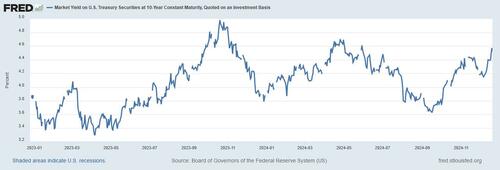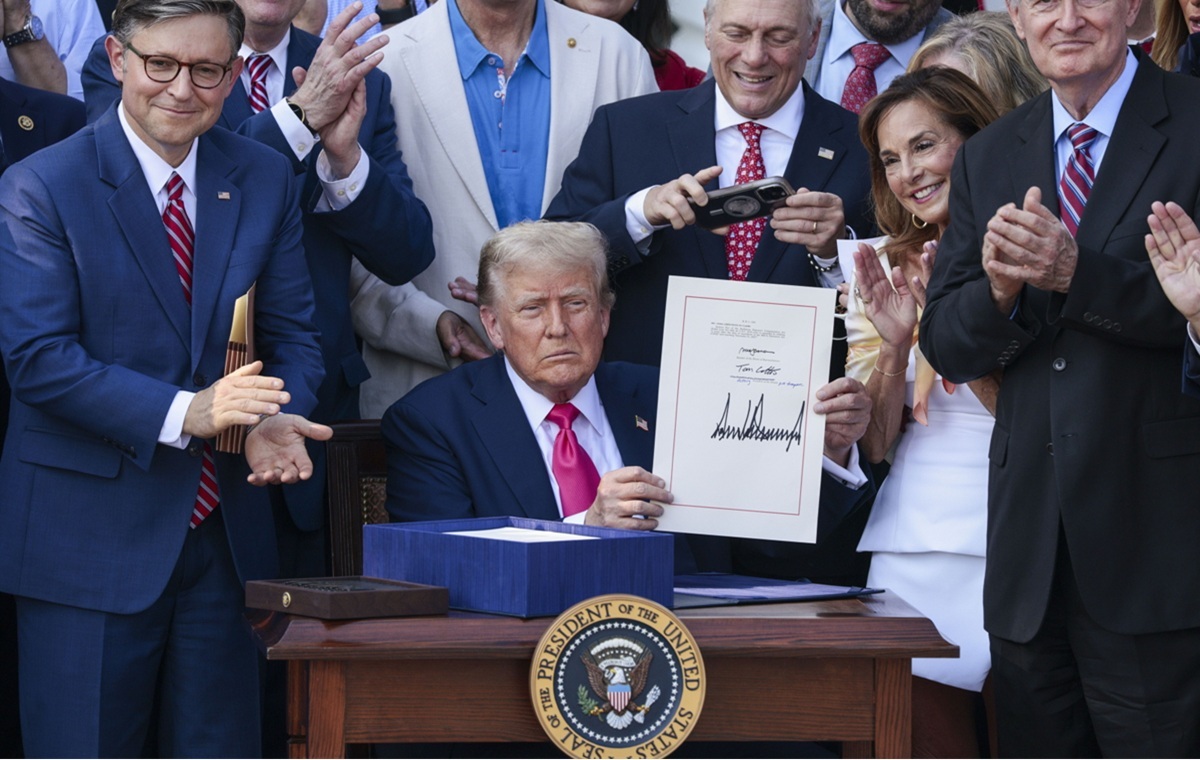
The Fed Is Cutting… So, Why Are Mortgage Rates Going Up?
Via SchiffGold.com,
Powell is admitting that inflation is still too high, but the Fed still plans to cut interest rates by .25%. So why are mortgage rates going up?

The Fed has turned hawkish relative to its recent rhetoric, resisting to slash interest rates as low as it had envisioned. Although it’s continuing to cut, the Fed’s actions primarily influence short-term interest rates, such as the federal funds rate. This is the rate at which banks lend to one another overnight. These short-term rates affect a wide range of borrowing costs including those on credit cards, car loans, and adjustable-rate mortgages.
However, most mortgage rates, particularly those for fixed-rate loans, are more closely tied to long-term bond yields such as the yield on 10-year U.S. Treasury bonds. And right now, 10-year Treasury yields are soaring.
While both short-term rates and long-term bond yields are influenced by the broader economic climate, they don’t move in lockstep. When the Fed cuts interest rates, it doesn’t directly control long-term bond yields, so mortgage rates can behave differently from the federal funds rate. This disconnect can lead to situations where mortgage rates rise, even though the Fed is trying to lower borrowing costs for the broader economy.
Mortgage rates are sensitive to inflation expectations. If investors believe that the Fed’s rate cut signals future inflationary pressure, they may demand higher yields on long-term bonds to compensate for the eroding value of money over time. When inflation expectations rise, long-term bond yields go up, which can push mortgage rates higher along with them.
And now the Fed itself has admitted that it hasn’t been able to control inflation. But even as Powell admits defeat and says it could be two years before inflation is back down to Fed targets, he still paints a picture much rosier than the reality.
As Peter Schiff said recently on Fox Business:
“Inflation won’t be anywhere near 2% in two years, it’s going to be higher than it is right now. Powell is still wrong about inflation and the economy…I think it’s stagflation that we have, and I think it’s going to get worse.”
If bond investors see the rate cut as a sign of weakening economic conditions, they might sell off bonds, driving yields higher. As bond yields rise, mortgage rates tend to follow suit, even if the Fed’s action aims to make borrowing cheaper. If investors believe that economic conditions are deteriorating, they might demand higher premiums for taking on long-term risk. This can lead to rising mortgage rates as lenders pass that risk onto borrowers. Anticipating higher inflation, they’ll demand higher and higher yields.
People hoping to buy homes are delaying their plans as mortgages become more expensive, along with home insurance premiums, materials for home improvement projects, and plenty of other costs that are part of the collective burden of home ownership. Commercial real estate is on the brink as well. With borrowing costs for properties continuing to creep upward, and other costs moving up as well, the Fed is trapped by its simultaneous need to lower borrowing costs and ease inflationary pressures at the same time.
It can’t do both. With a stagnant economy and high inflation, expect mortgage rates to rise further as the 10-year yield keeps surging closer back toward 5%. At that point, the Fed would be forced to take drastic action to push borrowing costs lower and prevent an all-out meltdown, possibly being forced into a round of QE which will ultimately solve nothing, ripping the inflation wound open even wider.

10-Year Bond Yields
The Fed may have no choice. Just as 2024 was a fitting demonstration of their hubris, declaring victory over inflation only to later admit defeat, 2025 may be the year that some of those chickens come home to roost. While the Fed and the government have an extraordinary ability to keep pumping bubbles bigger and kicking cans down the road, all bubbles are bound to pop eventually.
And the Fed is trapped in a prison of a deteriorating economy, high deficits, soaring debt, and high inflation that it has no way to escape.
Tyler Durden
Thu, 12/26/2024 – 08:00
















